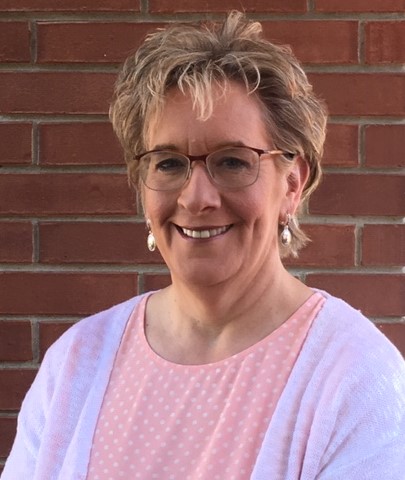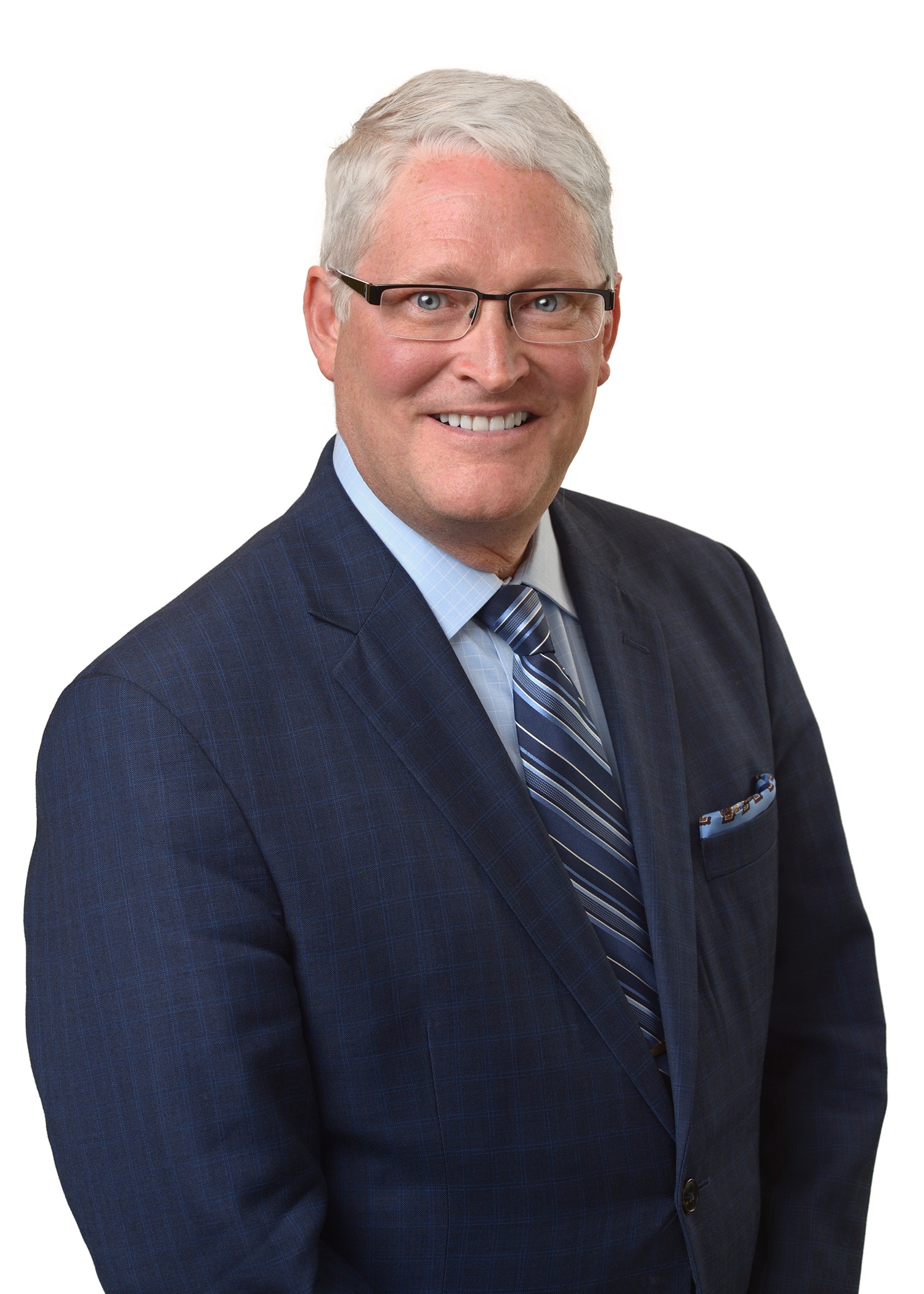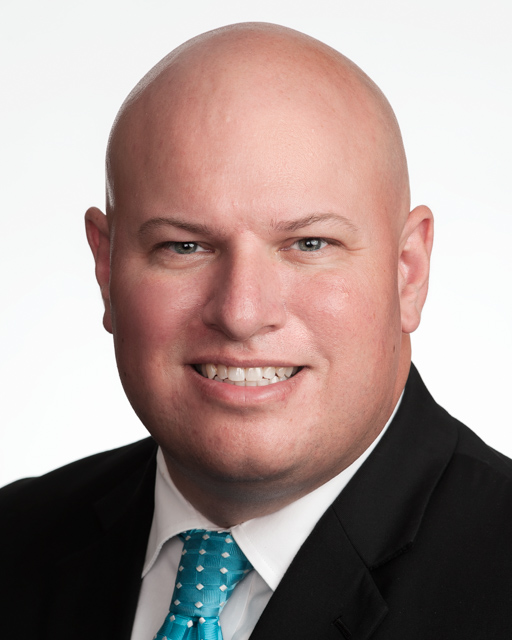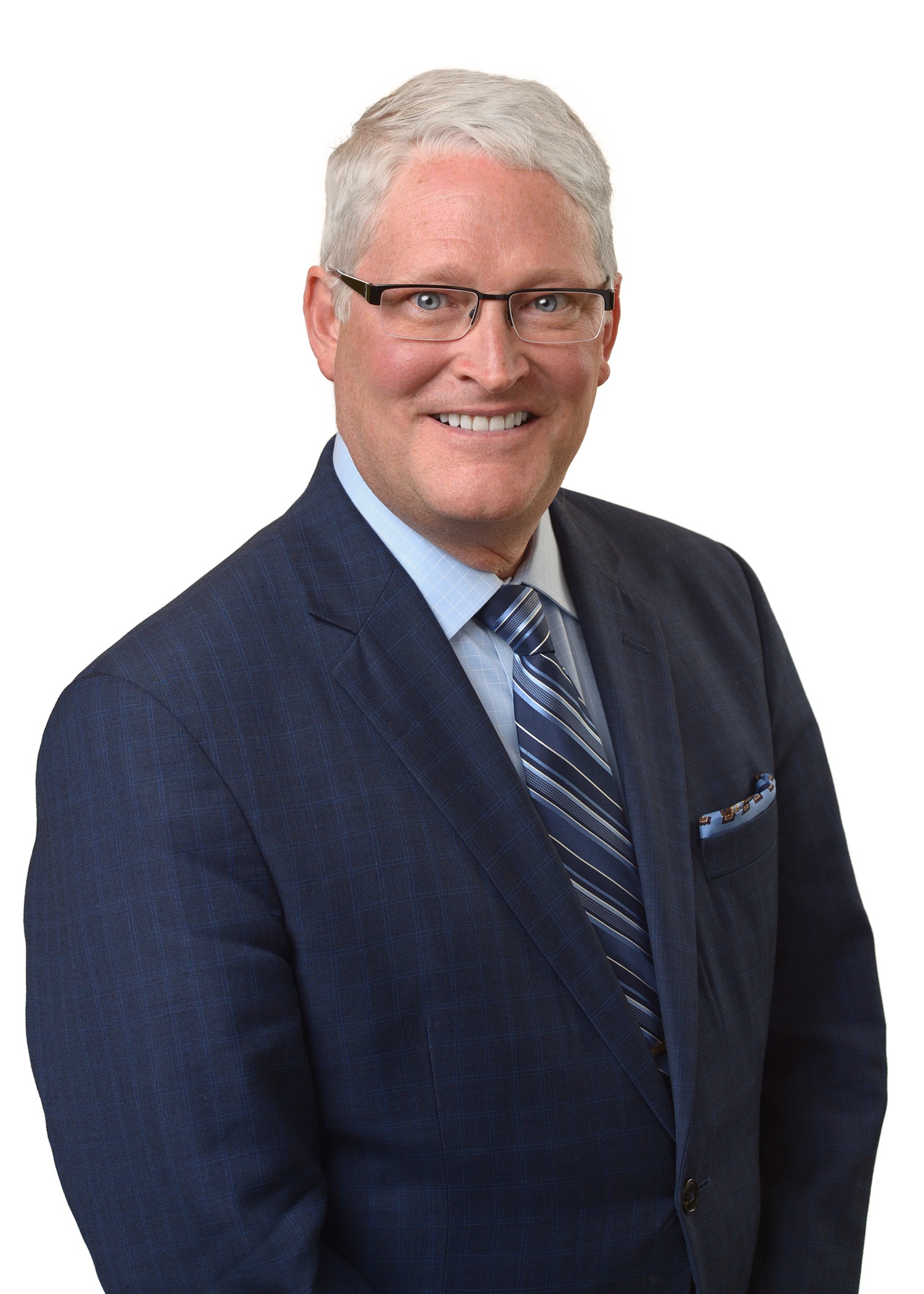Medical costs are expected to grow again in 2019 at a rate that will outpace inflation. As a result, many public entities are being pressured to consider new and innovative approaches to their health benefits. This type of change in strategy can help them achieve both quality and affordable care. However, organizations must also ensure that the value to employees will far outweigh any risk or disruption the change will bring. Here are three good reasons to consider such a change:
- Reducing total health plan costs. Today, many public entities have self-insured their health plans for greater control over costs and quality. They can further reduce healthcare spending by identifying plan members who incur high medical costs and offer them the types of services that will help them address their specific medical needs. For example, members who have diabetes often incur high-cost medical services, especially when they’re not properly managing their diet and exercise. Public entity health plans can monitor members who are diabetic and promote regular HbA1c testing. For diabetic members, the higher an HbA1c, the greater the risk of developing costly complications. Those who aren’t measuring HbA1c levels or those who have high readings could receive disease management coaching and case management services – this is an example of a sensible change that could be instituted.
- Improved experience for plan members. When public employees receive quality communications from their public entity health plan and they have access to concierge-level customer service, they don’t need to run to HR departments with questions and concerns. Public entities who self-insure their health benefits may consider switching administrators. They want a partner whose representatives are well trained in every aspect of their health plan and have the expertise to answer any and all questions from plan members.
- Improved transparency. Public entities are also looking for transparency into how their health plans are performing. There are many analytics and reporting tools available today, but not all of them have the same sophistication and capabilities. Public entities may want to make a change to ensure they have access to real-time data, as well as the ability to identify high-cost claimants, compare employee populations with national standards, and forecast outcomes. All of these functions can significantly improve how public entities manage their healthcare spending.
Savings opportunities, an improved employee experience, and improved transparency are all compelling reasons to introduce a change to your health benefits. In Part 2 of our Change Management series, we’ll review best practices to make sure the transition is as seamless as possible, so public entities and their employers can reap the rewards with minimal risk and disruption.
*The views and opinions expressed in the Public Risk Management Association (PRIMA) blogs are those of each respective author. The views and opinions do not necessarily reflect the official policy or position of PRIMA.*

By: Kelly Ferreira, CPA
Vice President, Implementation, HealthComp
Summary of Qualifications
Kelly has over 35 years of experience in health benefit administration. Her areas of expertise include implementation of project design, business process re-engineering and system development. Prior to working at HealthComp, Kelly held positions at Rudy Facciani Insurance Marketing Co., Saint Agnes Hospital and Deloitte & Touche.
Responsibilities
As the vice president of implementation at HealthComp, a third-party administrator, Kelly oversees the implementation and administration of health benefits plans for self-insured employers, including public entities. She performs project management and business process optimization functions as part of this role.
Education
California State University, Fresno
BS/Business Administration-Accountancy, Magna Cum Laude
Risk managers should instantly identify with the principles of resiliency. Much of what happens in our world is predictable and manageable, and loss prevention efforts can make it even more predictable and controllable. For insurable risks, we can then share or spread the risk for the less predictable and manageable through insurance or pooling. Building resilience helps us prepare for and manage uninsurable risk.
Resilience is a double-sided coin, and one of the ingredients that make its alloy so strong is risk management. One side of the coin, emergency management, is outwardly focused on protecting and restoring our community. The other side, continuity of operations (COOP), is inwardly focused, ensuring we can continue critical services and recover well. In other words, emergency management is what we do for others; COOP is what we do for ourselves.
Government exists to sustain and improve the health, safety and welfare of its community and constituents. K-12 schools and institutes of higher education exist to teach, inspire and protect students. These are not responsibilities to delegate in times of crisis.
A continuity event may be triggered by pandemic, severe weather or natural hazard, extended power failure, failure of critical systems, destruction of records or a facility or loss of key leadership. Have you identified essential functions that must continue uninterrupted or must be reestablished within hours or days? Could you maintain those functions and their necessary support functions for at least 30 days? Would continuity staff and records be available? Have you identified a suitable continuity site to restore critical operations far enough away not to be exposed to the same hazard? Have training and exercises proven effective?
Common themes in emergency management include an “all-hazards” approach; common terminology; scalability; interoperability; consistency in structure, training, exercises, and evaluation; and improvement. While we tend to rely upon our own people and processes during continuity events, emergency operations rely upon a much larger community. Therefore, planning, training, and exercising with others is of even higher value. Elected and appointed officials will need to focus upon policy direction and rained, practiced incident management and emergency operations center teams must be ready to manage.
FEMA and its partners provide free training, much of it available online as independent study. For emergency management, I recommend starting with IS-700, IS-100, and IS-200, followed by at least the G-300 classroom course (FEMA will also encourage IS-800). FEMA’s Professional Development Series (all online classes) and Advanced Professional Series provide structured learning and recognition. Each state’s training officer can provide access to local training.
NFPA 1600, Standard on Continuity, Emergency, and Crisis Management, is available as a free download. FEMA’s Continuity Excellence Series provides two levels of certificate programs. Partners such as TEEX provide excellent (and usually free) programs for FEMA, most of them in your area.
It’s not just a saying; it’s true: All emergencies start locally and end locally. Unlike shows on TV, no one is waiting to walk in and take over. We may marshal regional, state, and federal resources and coordination, but the local authority still bears the responsibility. We must be ready. The outcome will depend upon how well we have planned, mitigated, trained, and exercised.
*The views and opinions expressed in the Public Risk Management Association (PRIMA) blogs are those of each respective author. The views and opinions do not necessarily reflect the official policy or position of PRIMA.*

By: David Parker
Risk Management Analyst, Central Arizona Project
Summary of Qualifications
David has worked to further the practice of public risk management for over 30 years as a risk manager, regulator and practice leader, and by actively supporting and serving on the boards of directors of both national PRIMA and his local chapter. David has managed risk for state and local government, higher education, and special districts and has worked with and supported risk managers across the country in many different types and sizes of organization and leadership philosophies. His leadership development includes the certified public manager, leadership in police organizations, master continuity practitioner, and senior executives in state and local government programs. He has been recognized by PRIMA several times for his commitment to the practice of public risk management including PRIMA’s Certificate in Advanced Risk Management and International Exchange as well as Public Risk Manager of the Year awards.
Responsibilities
David is responsible for strategic and enterprise risk management for the Central Arizona Water Conservation District (known locally as the Central Arizona Project), which serves approximately 80% of Arizona's population. He is a member of CAP's resiliency team and captive insurance management team.
Business Experience
Risk Management Analyst, Central Arizona Project
Director of Risk and Emergency Management, Angelo State University
Commissioner, Industrial Commission of Arizona
Public/Education Sector Practice Leader, Midwest Employers Casualty Company
Director of Risk Management, Pima County, Arizona
Risk Manager, Arizona Department of Transportation
ERM Experience
David led the development of Angelo State University's ERM program. ERM was already well integrated into CAP's operations and he extended the program by developing a risk assessment model for accomplishment of CAP's strategic plan objectives and action items.
Professional Affiliations
National PRIMA and Arizona PRIMA chapter since 1988 (Texas chapter while at ASU)
IPMA-HR and Grand Canyon State chapter
Arizona Self-Insurers Association
Arizona Captive Insurers Association
Former Membership:
URMIA (member, presenter, and conference Pilates instructor)
International Association of Industrial Accident Boards and Commissions
Education
Associate in Risk Management (ARM), The Institutes
Risk Management for Public Entities (RMPE, ARM-P), The Institutes
Senior Executives in State and Local Government, Kennedy School of Government, Harvard University
Leadership in Police Organizations, Arizona POST
Certified Public Manager, Arizona State University
Master Continuity Practitioner, FEMA Emergency Management Institute
Infrastructure Protection Certificate Program, Texas A&M Engineering Extension (TEEX)
Senior Certified Professional, IPMA-HR
Like most states, California's school budgets are under extreme pressure. Teachers are bearing the brunt of rising healthcare and retirement costs, while infrastructure is failing without sufficient funds to make necessary repairs. Putting a dent in what schools are paying to settle liability claims would help keep dollars focused where they should be – in providing quality education for our children. But what is the true impact of those claims?
Martin Brady, executive director of Schools Insurance Authority (a California Joint Powers Authority of 36 K-12 public schools) recently began an effort to evaluate the impact of general liability claims on California K-12 public institutions with the hope of exploring the implementation of tort caps. Martin enlisted the help of Aon, and together they reached out to K-12 leaders from around the state to gauge interest. This resulted in overwhelming support and the creation of a consortium of dozens of California K-12 pools and large stand-alone districts. Efforts are now underway to aggregate loss data. Over the past few months, an actuarial team led by Mujtaba Datoo, Aon's public sector actuarial practice leader, has been collecting data on K-12 losses with incurred values of over $1 million.
The participants in the study represent approximately 60% of California's K-12 Average Daily Attendance (ADA). Over the past 10 years, the participating entities have generated 112 losses with incurred values in excess of $1 million. The total incurred value on these claims is approximately $356 million. Estimating and including the remaining 40% of the state's ADA would increase the totals to 187 claims and $593 million in losses, or approximately $60 million per year.
As we delve deeper into the data, we have uncovered several indicators that are quite compelling: less than 1% of the total number of claims is generating over 45% of the total incurred. Also, over 1/3rd of the claims and incurred losses involve molestation allegations, which are on the increase. To further exacerbate that trend, there is currently proposed legislation in the California State Senate to "eliminate the time limit for commencing an action for recovery of damages suffered as a result of childhood sexual assault."
*The views and opinions expressed in the Public Risk Management Association (PRIMA) blogs are those of each respective author. The views and opinions do not necessarily reflect the official policy or position of PRIMA.*

By: Craig Bowlus
Managing Director, Risk Pooling, Aon Risk Solutions
Summary of Qualifications
Craig has been with Aon for nine years, specializing in the public sector. He works with municipalities, schools, counties, special districts and Native American governments. Prior to Aon, he was with Marsh, where he spent nine years providing brokerage and risk consulting for insured and self-insured clients with an emphasis on the Public Sector and Higher Education. Twice named a public sector “Power Broker”. Extensive experience with public sector claims and litigation management issues, including consulting relative to the performance of TPAs, risk management information systems and other data analytics. Craig carries an ARM designation.
Responsibilities
Craig manages Aon’s Risk Pooling Practice, acting as a national resource to help deliver intellectual capital and internal resources to colleagues and clients across the country. These resources include placement of property & casualty coverage, technology solutions, risk consulting and health & benefits brokerage and risk consulting. Craig manages Aon’s interactions with pooling trade organizations such as AGRIP and CAJPA, and also hosts Aon’s biennial Risk Pooling Symposium.
Business Experience
Craig has 39 years of experience in risk consulting and brokerage services for the public sector. Craig has worked at Toplis & Harding (an international TPA), Ward North America (a domestic TPA), Marsh as a public sector broker and now at Aon where he manages a national pooling practice group.
Professional Affiliations
Public Risk Management Association (PRIMA), Public Agency Risk Management Association (PARMA), California Association of Joint Powers Authorities (CAJPA), Association of Government Insurance and Risk Pools (AGRIP), Native American Finance Officers Association (NAFOA)
When planning a trip, potential travelers often seek the advice of those who have previously journeyed to a particular destination. They look for recommendations on a wide array of things including what to pack, places to visit (or to avoid) and tips to reduce the hassles and inconveniences that often accompany travel to an unfamiliar place.
If your organization is a public entity, chances are you will face a catastrophic event that will require you to venture down the road to FEMA Public Assistance. Consideration of the following information will help you better prepare for the journey ahead.
Funds for the Journey
Once a federal disaster declaration has been made, eligible entities may look to available funding assistance from FEMA.
Be aware that the FEMA Public Assistance (PA) Grant is a cost-share program, with the federal cost share portion at no less than 75%. The state agency receiving the PA Grant will determine the cost share (25% or less) required of its applicants (sub-recipients). Therefore, applicants should plan for a portion of disaster-related expenses to be supported by existing budgets.
Additionally, FEMA PA Grants are reimbursement grants. The submission of invoices and proof of payment made for eligible disaster-related expenses is required. Applicants are advised to make plans for up-front funding of these expenditures until FEMA reimbursement has been approved and processed.
Checkpoints Along the Journey
The new FEMA PA Program delivery model requires that an eligible project and its associated documentation go through many review ‘checkpoints’ before funding is approved and obligated. Applicants should be aware that a single step in the process can take several months, if not longer, to complete. State agency recipients will conduct a separate review once FEMA has obligated funds and before releasing payment to sub-recipients.
A couple of critical checkpoints for which the applicant should prepare are:
Damage Descriptions and Dimensions (DDD) – Because the FEMA site inspectors can only write up damages that they see or that the applicant draws to their attention, the costing of the scope of work by the Consolidated Resource Center (CRC) can be insufficient to cover the total repairs to the damaged site. Applicants are advised to remain very involved in the scope of work development or seek assistance from expert cost estimators to review the FEMA generated DDD before signing off on an agreement.
Insurance Review - The interplay of insurance proceeds and FEMA assistance is critical to understand. Applicants should be prepared to discuss with FEMA the strategy they would like to employ in the application of insurance proceeds to eligible projects in order to optimize their reimbursement.
Travel Guides
The inclusion of experienced internal and external ‘travel guides’ can ease the burden of the FEMA PA claim journey. For example, FEMA PA Grants require compliance with all federal procurement guidelines. Procurement compliance is highly scrutinized and is one of the top reasons for funding deobligation, so risk managers are advised to involve their procurement colleagues in the early stages of disaster recovery planning and execution. External professionals and consultants can also assist organizations in technical aspects of disaster recovery, and many of their service fees are eligible and reimbursable as Direct Administrative Costs (DAC) under PA Program guidelines.
Catastrophe is not a desired destination, but thoughtful preparation and planning will assist your organization through the journey of disaster recovery and back home to regular business activity.
*The views and opinions expressed in the Public Risk Management Association (PRIMA) blogs are those of each respective author. The views and opinions do not necessarily reflect the official policy or position of PRIMA.*

By: Shelley Vineyard
Managing Consultant, Disaster Recovery Services, LLC
Summary of Qualifications
Shelley is a managing consultant with Disaster Recovery Services, LLC. She focuses on public entity risk management and procurement strategies in the facilitation of complex disaster recovery projects.
Responsibilities
Shelley serves as a subject matter expert in the areas of public procurement and governmental business operations. Her responsibilities include working closely with project managers and public entity clients to prepare comprehensive action plans for recovery efforts, especially where state and federal public assistance is involved. Additionally, Shelley works closely with vendors, cooperative purchasing groups, and client purchasing departments to provide procurement guidance, training and assistance, helping develop comprehensive procurement strategies to support financial recovery.
Business Experience
Shelley holds over 30 years of business operations experience. She spent 13 years in public education leading various business functions, specializing in the areas of public procurement, contract management, risk management, and policy development. She has also served as a subject matter expert to trustees and executive leadership. Shelley has experience in the management of the formal bid process, procurement and placement of property and casualty insurance for large scale exposures, as well as process mapping and re-design. Shelley led teams through recovery during Hurricanes Ike (2008) and Harvey (2017) and is currently assisting clients through recovery from Hurricanes Florence and Michael (2018).
Professional Affiliations
National Cooperative Purchasing Procurement Partners (NCPP)
National Institute of Government Procurement (NIGP)
Public Risk Management Association (PRIMA)
Texas Association of School Business Officials (TASBO)
University Risk Management & Insurance Association (URMIA)
Education
Bachelors of Business Administration, Baylor University
Masters of Business Administration, Dallas Baptist University
Certifications:
Registered Texas School Business Administrator (RTSBA)
Certificate in Process Management - University of Texas, Austin, TX
Certificate in Non-Profit Leadership - Rice University, Houston, TX
There is a real benefit to reporting losses immediately after they happen. This is particularly important in workers’ compensation insurance. The time between the occurrence of the loss and the reporting to the insurance carrier is called lag time, and is usually measured in days.
Glen-Roberts Pitruzzello, an actuary and pricing analyst with the Hartford, did a definitive study on the average cost of workers’ compensation claims based on lag time. His findings, which involved analysis of 53,000 claims, are more than compelling. Injuries reported within 1-2 weeks are 18% more expensive than those reported within 1 week, and injuries reported after the 4th week following an injury are 45% more expensive.
Beyond the insurance costs of late reporting, here are three other reasons why early reporting is important.
Reason #1: Early reporting means early treatment. Once an injury occurs, we want to get the employee medical attention as soon as possible. Delayed treatment can mean an increased chance of infection, aggravation of the injury or injury to other parts of the body. In many cases, early treatment results in better outcomes for both the employee and the employer.
Reason #2 – Early reporting allows for corrective action. This allows the management team to conduct a prompt and thorough investigation, identify causal factors and establish corrective actions to prevent recurrence.
Reason #3 – Early reporting alleviates suspicion. Unfortunately, workers’ compensation fraud does occur. When an injury is reported late, it can arouse suspicions and the employee/employer relationship may become adversarial.
Defining the Problem
It is a simple task to track lag time. Most insurance carriers easily capture the time between the day of occurrence and the date reported. But what most do not recognize is that there are actually three lag times, each of which may have different causes.
The first is a lag between the day of the injury and when the employee informs their supervisor. The second lag time involves how long it takes the supervisor to inform the front office. The third lag time is the delay in the injury being reported to the insurance carrier by company personnel.
The carrier doesn’t capture this data. Therefore, it is important to find where the problem lies locally if you want to change it. The first step is to establish standards. Many organizations use a three-day threshold, allowing one day for each of the three lag times previously mentioned.
Once standards are set, the next step would be to track the losses in all three lag time areas. The final step would be to uncover the cause behind delays in the lag time areas. Here are some potential causes:
Reasons employees delay reporting to the supervisor
Fear of Discipline: Organizations that rely on a program where discipline results when someone gets hurt can encourage employees to not report claims.
Peer Pressure: Sometimes coworkers will encourage not reporting injuries because of safety goals or some cultural norms.
Perceived hassle: Oftentimes when employees report an injury, they tend to avoid situations that make them uncomfortable.
Embarrassment: When employees have an injury, they are often embarrassed and do not want to draw attention to their actions.
Perceived minor injury: The employee may underestimate the seriousness of the injury.
Reasons supervisors delay reporting to the front office
Perceived hassle: No one likes to fill out an accident form, they can be challenging to complete and are sometimes observed as having no value.
Perceived failure: Some supervisors feel that they have personally failed when one of their employee gets hurt on the job. At times, those feelings may be justified.
Perceived minor injury: As with the employees not reporting minor injuries, the supervisor may feel that the injury is not serious enough to be reported.
Management pressure: Management can create the impression, implied or implicit, that reporting a loss will not be looked at favorably.
Interferes with primary tasks: Supervisors have a lot to do on a normal day so reporting the injury may be a secondary concern or avoided entirely.
Reasons the front office delays reporting to the insurance carrier
Perceived hassle: Sometimes the method of reporting can be difficult, time-consuming and frustrating.
Conflicting priorities: Very few organizations are large enough to have an employee dedicated to just reporting claims and there may be other tasks to perform that are seen as higher priorities.
Informal retention (Med Only): Some organizations purposely retain some apparently simple injuries and pay the medical provider directly in an attempt to keep their workers’ compensation insurance premium low. If a seemingly benign injury becomes more complicated, then a late claim is filed, often along with an excuse for the late reporting. .
Conclusion
Once an organization accepts that their lag time is a problem, identifies the type(s) of lag time they have and discovers the reasons for delay, then they can proceed to fix their problem. Promptly reporting employees’ occupational injuries and illnesses improves outcomes, reduces costs and creates a stronger relationship with the insurance carrier.
*The views and opinions expressed in the Public Risk Management Association (PRIMA) blogs are those of each respective author. The views and opinions do not necessarily reflect the official policy or position of PRIMA.*

By: Chuck Goodman
Senior Loss Control Services Consultant, Arthur J. Gallagher & Co.
Summary of Qualifications
Chuck has filled various safety and risk management roles for almost 30 years. During that time, he has developed innovative procedures to tackle the most frustrating and challenging risk management problems. He currently provides loss control services to a risk pool of Iowa counties and various other clients.
Responsibilities
Provides loss control services to clients and prospects, which includes training, program development and leadership development.
Business Experience
Chuck has been providing loss control services to clients and prospects of Arthur J. Gallagher & Co., a large commercial insurance broker, for 11 years. He has worked previously as a safety and risk manager for Andersen Windows and Dr. Pepper/Seven Up, and was the training manager for the Iowa-Illinois Safety Council.
ERM Experience
Chuck served as the risk manager for a Professional Employers Organization (PEO).
Professional Affiliations
Chuck is currently the president of the Board of Directors for the Iowa-Illinois Safety Council.
Education
Chuck has a Bachelor of Science degree in education and sociology from the University of the State of New York, Albany.
Traditionally, America's police have met the mission to protect and to serve by responding to almost any call, including the call to intervene in a suicide threat. When a distressed person calls a family member to inform them that he is about to take their own life, the relative often calls the police next. When police arrive, the despondent person shouts at the officers to leave him alone.
Police officers are the default first response to mental health crises of suicidal persons. But is this really a police matter—or a risk that should be shifted to mental health services, or even allowed to play out without any emergency intervention? Is the call truly an emergency, or is there time to seek a warrant, or perhaps a court order for mental health evaluation?
In a much-noticed decision out of the Fourth Circuit a few years ago, one judge astutely noted that when responding to non-criminal mental health incidents, officers can simply choose to do nothing—and that legally, this might be the safest option. Judge Wilkinson wrote, “law enforcement will learn soon enough that sins of omission are generally not actionable.”
Officers feel like they have to do something. After all, the motto on the back of the patrol car says, “to serve and protect.” At the same time, officers know that suicidal subjects may quickly become homicidal subjects and pose a great threat to the officers. What is the proper police role?
Many public safety agencies are training officers in the concept of tactical repositioning, or as some call it, tactical withdrawal, in suicide threat calls. Others are choosing to not respond when there is no apparent threat to other persons.
No matter what approach the agency prescribes, officers (particularly first line supervisors) should be educated on some basic risk management principles common to suicide threat calls. First, teach officers about the “public duty doctrine,” which provides that the police have a general duty to all citizens, but no particular duty to any one citizen. Second, educate officers that undertaking certain action can create a special relationship with an individual citizen and void the protection of the public duty doctrine.
If the agency chooses a philosophy of responding, assessing the threat and tactical repositioning, what does that look like? How is that different than doing nothing and just walking away? Tactical repositioning implies tactical thinking and decision-making. Responding officers are not doing nothing—they’re choosing to take the action that reasonably appears to be the least risky based on an analysis of the situation.
Beyond not creating a legal duty and invalidating the potential protection of the public duty doctrine, what steps should officers take? First, if family or friends are present, officers should provide numbers and information for mental health referrals. If there are no friends or family on scene, the officers might consider leaving pamphlets listing resources for the subject. Second, the officers should explain the police response to family members or bystanders. Officers should caution them about the risks of engaging the person threatening suicide. Invite them to call 911 if conditions change or if they have further cause to worry.
Finally, recognize that the subject may harm himself after police leave. That’s simply the harsh truth. Also, officers simply must not make promises that they can't keep or statements that may not be true.
The final consideration in responding to suicidal subjects is how officers document the response. If legal action does arise out of the incident, the police report will be one of the key pieces of information analyzed. It’s important that officers not only document precisely the situation they faced and the action they took, but also why. They should document the analysis they went through to arrive at the response decisions. If officers forced entry without a warrant, the reports must explain why officers believed those actions were justified from a legal and safety standpoint. If officers used force, what were they expecting to accomplish?
If the responding officers chose tactical repositioning, they should carefully document how a Priority of Life analysis led them to believe this was the safest action for the public, the officers and the suicidal subject. In addition to explaining what force wasn’t used and what seizure didn’t happen, the officers should explain what actions they took to help the subject and explain the situation to family members.
*The views and opinions expressed in the Public Risk Management Association (PRIMA) blogs are those of each respective author. The views and opinions do not necessarily reflect the official policy or position of PRIMA.*

By: Ken Wallentine
Chief of Police, West Jordan Police Department
Summary of Qualifications
Ken is the chief of police in West Jordan, Utah. Ken is also the editor of Xiphos, a monthly criminal procedure newsletter published by Lexipol, the nation’s
leading provider of public safety risk management policies and resources. Ken is the former chief of law enforcement for the Utah attorney general. Ken is a
use of force consultant and expert witness in state and federal criminal and civil litigation in many courts across the nation. Numerous risk management pools have called on his expertise to train and consult for use of force risk mitigation and claims management. Ken formerly served as bureau chief of the POST Investigations Bureau and as administrative counsel for Utah Department of Public Safety.
Business Experience
Senior Legal Advisor, Lexipol, 2009-present.
Administrative Law Judge, Park City, 2013-present.
Chief of Law Enforcement, Utah Attorney General, 2005-2014.
Administrative Law Judge, City of South Salt Lake, 2008-2010.
Administrative Law Judge, Utah Career Service Review Board, 2001-2005.
Adjunct Professor, J. Reuben Clark Law School, Brigham Young University, 2009-2010.
Adjunct Professor, Criminal Justice, Excelsior College, Albany, New York, 2004-2011.
Administrative Counsel, Utah Peace Officer Standards & Training, 2000-2005.
Chief Deputy Uintah County Attorney, 1994-2001.
Professional Affiliations
Board of Directors, Institute for the Prevention of In-Custody Death, 2016-present.
Vice-Chair, Utah Law Enforcement Legislative Committee (past-chairman), 2015-present.
Board of Continuing Legal Education, Utah Supreme Court, 1996-2014.
Chair, Peace Officer Merit Commission of Greater Salt Lake County, 2013-present.
Outstanding Service Award, Utah Chiefs of Police Association, March 2014.
Governor’s Award for Excellence in Outstanding Public Service, 2010.
President, Inn I, American Inns of Court, 2006-07.
Attorney, concentrating on public employment and police liability law, Parsons Behle & Latimer, 1992-94.
Judicial Clerk to the Honorable Edith H. Jones, U.S. Court of Appeals for the Fifth Circuit, 1991-92.
Judicial Clerk to the Honorable Gregory K. Orme, Utah Court of Appeals, 1990-9
Once in a blue moon, the U.S. government allows the implementation of a program that affords employers the opportunity to save money without inconveniencing employees. While you process that statement, think of what your current spend is on pharmacy. What just a few years ago was a small percentage of your medical cost may now occupy a higher percentage of the total spend without a cost control method in sight… until now. The creation of a new company called OwnRx has two programs it offers that make the cost of medications less expensive and the purchase of prescription medications completely transparent.
The two programs available through this company are Acquisition Cost Index (ACI) and Own Use. ACI is available to all employers and offers the ability to purchase medications at their actual cost. This allows for transparency in the purchase price of each prescription possible and completely changes the way the purchase of medications occurs. A pharmacy benefit manager (PBM) determines the daily average cost of each medication, which is what the employer will pay for the medication (cost of the medication and a dispensing fee). To determine how this program could benefit an organization, the previous 12 months of the pharmacy claims would be gathered and analyzed to determine what the organization actually paid versus what the organization would have paid had it participated in the ACI program. The results are then broken down into medication categories such as generic, brand, non-formulary and specialty. This savings can range between 5% - 15% depending upon the types of medications dispensed and the retail pharmacy through which they are purchased. Program participants will receive 100% of manufacturers’ rebates and implementation of this program usually takes approximately 90 days, which is a quick turnaround.
The Own Use program is limited in applicability, but if you as an employer are a school system, public university, church, non-profit organization or hospital, your participation in this program can result in savings between 15 and 25%. This program is not new, but OwnRx is the first company to implement the necessary processes to make this program viable. The program grants local non-profit hospitals a federally-designated class of trade allowing it to purchase medications at a reduced cost which they can then dispense, through an authorized pharmacy, at that reduced cost. The pharmacy benefits manager administers this program and a third-party administrator verifies that those who participate in the program are eligible. Having each step in place allows a seamless process for the employees and alleviates the burden of the hospital administering the program itself. Implementation of this program takes approximately one year, granting more time for all contracts to be executed and for information to be provided to all employees.
These programs afford the possibility to offer excellent coverage for employees while saving money and bringing transparency to an aspect of health insurance that has many hidden costs.

By: Mark Morgan
President, Sherril Morgan
Summary of Qualifications
In his 30 years at Sherrill Morgan, Mark has accumulated a wealth of experience in establishing and managing employee benefit plans. As the founder of Sherrill Morgan’s group health division, he paved the way in developing a systematic approach to healthcare benefits for governmental clients and has personally managed over 150 of them. He is a licensed agent and consultant and is up-to-date on the latest healthcare rules and regulations. Understanding that an innovative approach is necessary to stay ahead in the healthcare industry, Mark has helped Sherrill Morgan to develop its partial self-funding division which allows employers to have a measure of control over their healthcare costs. Mark is a leading proponent for transparency in healthcare costs and is regularly invited to speak at human resources conventions on health benefits and health care reform.
Responsibilities
Mark's responsibilities include establishing and managing employee benefit plans. He works with clients for all major board and council meetings. His expertise is developing direct to employer contracting between hospitals and providers, and negotiating retail pharmacy programs for the health plan. He is a leader in promoting pharmacogenetic testing within employer plans. He also creates innovative and visionary concepts and strategies to help reduce the rising cost in healthcare for clients.
Business Experience
Mark has been the president of Sherrill Morgan since January 1990 and in his spare time has been a board member for the Steinford Toy Foundation, Kentucky Health Purchasing Alliance and Kids Helping Kids. Mark was also a chairman of the Board for Senior Services for over six years.
Education
Mount Vernon Nazarene University
In the last few years, the Federal Department of Justice (DOJ) has reduced their involvement in case investigations and engaging practice consent decrees against local police departments. With that oversight being reduced, the role of public entity insurers and municipal pools has taken on a larger role.
Pools become experts regarding any litigation trends in their state, but they can also learn about changes taking place all around the country by having discussions with their excess or reinsurance carrier.
Civil rights claims grow every year. Without stronger tort caps and immunities, the costs and results of litigation rises. Premiums begin to go up and it becomes harder for an entity with budget issues to afford insurance or a pool membership. Many entities have limits around $10M, but with recent verdicts and settlements, higher limits of coverage seem to be needed. When an ultimate liability question is being debated, it is clearly known that a loss could result in damages awarded that could surpass an entity’s limits. It became hopeful that state and federal agencies would investigate ways to help reduce exposures.
Pools and carriers have threatened to cancel an entity’s liability insurance when that entity’s leaders, in coordination withpolice departments, face allegations of internal corruption. Of course, any internal problems that emanate from the police or elected officials will reach the media quickly. Pools and carriers do not want to be associated with any news involving internal corruption.
Internal corruption often results in employees filing suits that can sometimes take well over a million dollars to resolve. As soon as one employee’s suit succeeds, many other co-employees may join the litigation which can lead to a class action litigation. If an employee, especially a police employee, begins receiving negative publicity in the media, pools and insurers will pressure the entity to fire that person or will cancel their policy.
An entity’s loss of insurance coverage can become a huge problem for the police force. Recently, cities in several states disbanded their police departments after losing coverage and contracted with another entity’s department. Without insurance coverage, these large police-related claims can bankrupt municipalities that have other financial issues, especially smaller entities with a tight budget and smaller tax base.
Some pools and insurers are starting to request body cam usage, jail audits and updated procedural policies.Some also recommend that their clients provide better training and improve supervision in many different departments. There are organizations that concentrate in the areas requiring strong training. For instance, Lexipol helps police, fire and prison-related entities learn what is needed to improve. They will update their clients when National or State legislation makes changes that can have a large impact on their procedures.
Many states have required that police forces adopt new policies regarding areas like body cameras, strip searches and use of force. Many of these changes have come as a result of claims. When claims result in large exposures, pool and insurance carriers will make contact with the state government to ensure that the legislatures are made aware of changes that can result in their improvement.
Pools and carriers can also organize meetings with state governments to help revamp things. For example, most states have a 2-3 year statute of limitations (SOL) which limits the time a suit can be filed. In some states, the statute regarding police activity became set at a higher level. In Wisconsin, the police related statute was set at 6 years. A lawyer who was actively involved in police-related litigation put together a group of mutual “pool” representatives and insurance carriers to meet with the state to discuss their SOL. After a few meetings, the group was able to get the state to reduce that SOL to three years. This is a good example as to how a carrier or a pool can help the government improve litigation matters. A pool or a carrier will also meet with a town’s mayor or city council to get them to consider changing some local ordinances that can improve things.
Meetings are also held to encourage an entity to consider settling a case rather than take it to trial. Many, but not all, cases can be resolved before the trial date for a more reasonable amount than expected. If the case goes to trial and results in a large, highly publicized verdict, this can set a tough precedent for the entity and the entire state. Pools and carriers have to make sure that their messages are not sent as a political topic, which can limit a government’s attention.

By: Richard Spiers, CPCU, ARM, ARe, AIC
Claim Consultant, Spiers Consulting, LLC
Summary of Qualifications
Richard has been in the insurance industry since 1980 and has been a claim executive in the reinsurance and excess marketplace since 1985. He was with Genesis Management and Insurance Services for over 20 years. Richard has extensive experience handling the wide array of claims faced by public entities, K-12 school districts and the higher education sector. Based in Chicago, he has also worked for Transamerica Insurance Group, Northbrook Excess and Surplus Insurance, CNA and Allstate Reinsurance. He is a graduate of Northern Illinois University, a member of the Society of CPCU, and holds associate designations in risk management, claims and reinsurance. Richard has been developing and presenting insurance industry-related training sessions to a variety of client and industry groups for over 25 years.
The State of Ohio is currently considering legislation that would require that nearly all police body camera video be subject to public records disclosure. The legislation in question, Substitute House Bill 425[1], would designate police body camera video as records subject to disclosure, unless the recording depicts a variety of enumerated exceptions largely related to privacy. The bill appears to have bipartisan support and appears headed toward a vote in both chambers of the legislature. Supporters of the legislation claim that this bill could become a national model for other states to enact to address both concerns over privacy and the public’s desire to have first-hand access to the work of law enforcement.
Throughout the country, a majority of states still do not have legislation clearly defining whether or to what extent police body camera video should be deemed a public record. There are, of course, outliers. Some states, like South Carolina, have concluded none of the video generated from police body cams should be subject to public records law. There are other states, like Nevada, on the opposite end of the spectrum, providing little or no exceptions to the premise that all body cam video is subject to public records law. However, a majority of states have still refused to adopt legislation regarding how police body cameras are to be addressed under public record laws.
In those states where legislation has not clearly addressed the intersection of body cams and public record law, there is, not surprisingly, more litigation over disclosure. For example, New York Judge Ann Marie Taddeo ruled that the City of Rochester’s policy on redaction and disclosure of body cam video violated New York’s public record law, which does not specifically address body cam video. The City allegedly maintained a policy that called for the wholesale redaction of the images of police officers and the complete masking of the voices of officers. When a member of the Rochester media requested a copy of body cam video related to an incident, the video that was produced was allegedly blurred and without sound. Ultimately, the court concluded that the blanket policy was inconsistent with state law and that any redactions must have individualized support.
The litigation (and outcome) that the City of Rochester faced is becoming more and more common. In states that have not adopted legislation addressing the public record implications of body cameras, law enforcement agencies are left to do their best to develop policies that are consistent with antiquated public record laws that were adopted when public records only existed on paper. It is clear that in at least some scenarios, body camera video does constitute a public record subject to disclosure. However, it’s just as clear that there are some proper limitations on the content of video that is subject to public disclosure. Perhaps the legislation in Ohio will indeed become a national model, but regardless, any legislative guidance specific to body cameras is a welcome alternative to attempting to apply 21st century technology to public record laws that often times originate from the 19th century.
[1] It is worth noting that despite the Bill’s title being “Declare police body camera recordings not to be public records,” the substitute bill actually establishes that the recordings are in fact public records, subject to enumerated exceptions.

By: Samuel C. Hall Jr.
Director/Shareholder, Crivello Carlson, S.C.
Summary of Qualifications
Samuel C. Hall, Jr. is a shareholder at Crivello Carlson, S.C. He received his bachelor’s degree and law degree from Marquette University. During law school, Sam was a St. Thomas More Scholar for three years and was a member of the Marquette Sports Law Review. His principal practice focuses on civil rights litigation and appellate practice.
Sam has successfully defended many government officials, law enforcement officers and municipalities in cases involving alleged civil rights violations. Sam is admitted to practice and has defended law enforcement in Wisconsin, Illinois and New York state courts, the United States Supreme Court, the Third Circuit Court of Appeals, the Fifth Circuit Court of Appeals, the Seventh Circuit Court of Appeals and federal district courts in Wisconsin, Illinois, New York, Texas and Pennsylvania.
Sam received “AV-Preeminent” peer and judicial ratings by Martindale-Hubbell (which is the highest possible rating) and has also been selected for the Wisconsin Super Lawyers Rising Stars list several times for his civil rights defense and appellate work. Based on his experience in defending law enforcement officers, Sam has been a keynote speaker and lecturer for various law enforcement organizations and has also served as an instructor for a Master’s level course offered by the University of Wisconsin for law enforcement command staff.
Responsibilities
Sam is primarily responsible for litigating cases on behalf of government officials, including law enforcement officers. Beyond litigation, Sam is also responsible for conducting policy reviews, drafting policies and providing analysis and recommendations related to local government functions.
Business Experience
Sam is an equity shareholder at the law firm of Crivello Carlson, where he works primarily from the firm’s Milwaukee and Chicago offices. He is currently the chairman of the firm’s finance and compensation committee. As an attorney primarily representing local governments, Sam has worked collaboratively with risk management officials to provide proactive direction for risk management throughout government. Specifically within law enforcement, Sam has worked with officials to identify aspects of policies that present risk and he has worked to develop new policies and training to mitigate risk.
Professional Affiliations
American Bar Association, Wisconsin Bar Association, Illinois State Bar Association, New York Bar Association, National Native American Bar Association
Seventh Circuit Court of Appeals Bar Association, Eastern District of Wisconsin Bar Association
The Federalist Society
National Academy of Recording Arts & Sciences
National Eagle Scouts Association
Thoroughbred Owners & Breeders Association
Education
B.A., Marquette University
J.D., Marquette University Law School
Being proactive in pharmacy management is critical. During our pharmacy team strategy meetings, our focus is on getting ahead of the various trends and medication issues that we see across our book of business. When it comes to helping reducing time away from work following an injury and reducing claim spend, access to the right medications at the right time is crucial while also managing to prevent chronic use of high risk medications. Whether it’s a police officer that overdosed on illicit fentanyl due to inadvertent contact during a drug bust, or a teacher who is suffering from chronic back pain due to a severe fall, a comprehensive pharmacy program helps to ensure both scenarios are clinically handled in a timely fashion, and with a patient centered focus. Three key practices for an effective pharmacy program include the utilization of a trusted pharmacy benefit manager (PBM), custom and clinically minded formularies and, last but not least, clinician support.
Ensuring that an injured worker has easy access to needed and appropriate medications is an important first step. A PBM not only helps to ensure better pharmacy rates through their network, but the network also provides easy access so that a local pharmacy can be readily located. With a pharmacy card in hand (or even on their mobile device) from the PBM, the medication transaction can be easily adjudicated and dispensed so that the injured worker can start treatment immediately. Additionally, a good PBM will also provide the needed clinical checks on any medications requested to ensure safety.
Another critical tool that PBMs can provide is a clinically robust and custom drug formulary. Some states have had their own formularies in place for years and more and more states are considering them. However, PBMs have been using formularies for decades to prevent the use of medications that are not related to the injury or that are higher risk in nature and require review prior to dispensing. You can work with PBM vendors to develop custom formularies based on the injury type itself and the age of the claim. This will, for instance, help you understand the difference between the types of medications that are needed (or not needed) following a severe burn and the types of medications needed after the inhalation of toxic fumes or after a severe fall.
Lastly, being proactive means including clinicians in the process. Many of the more common medications used after an injury, such as opioids, muscle relaxants or sleep medications, will not only increase claim duration and cost but are also typically addictive and require tapering after only weeks of use. Clinicians, including specially trained nurses or pharmacists, can provide both the needed insight on medications along with better decision making on drug requests and tapering plans.
If you haven’t already, take on these proactive tools to better address pharmacy utilization and better care for your injured workers. These basic steps will go a long way in ensuring better care and outcomes.

By: Paul Peak
AVP Clinical Pharmacy, Sedgwick
Summary of Qualifications
Paul has worked for Sedgwick for approximately five years in supporting the Sedgwick Pharmacy Program.
Responsibilities
Paul is a pharmacist at Sedgwick and oversees both the pharmacy benefit manager (PBM) vendors as well as Sedgwick's clinical efforts and team of clinical pharmacists.
Business Experience
Prior to Paul's time at Sedgwick, he worked as a clinical pharmacist for Accredo, a specialty pharmacy. He also has pharmacy experience in both the retail and hospital sectors.
Education
Paul earned his Doctor of Pharmacy degree from McWhorter School of Pharmacy (Samford University)















